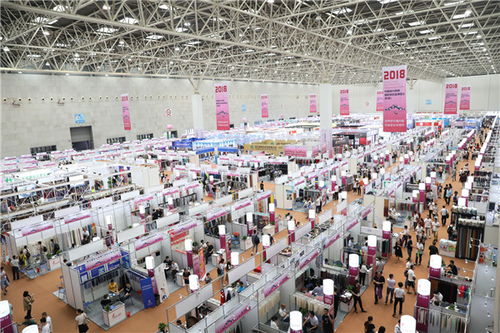Prevention and Response to Textile Fires
Textile fires are a common occurrence in the textile industry, causing significant damage and loss of life. To prevent these fires, it is essential to implement effective fire prevention measures such as regular inspections, proper storage, and use of fire-resistant materials. In response to textile fires, it is important to have emergency plans in place, including evacuation routes and first aid stations. Additionally, workers should be trained on how to handle emergency situations and respond quickly to any fire alarms or warnings. By implementing these measures, we can reduce the risk of textile fires and minimize their impact on our communities.
Introduction: Textile fires can be devastating, causing extensive damage to property and endangering lives. Understanding the potential causes and steps to take when they occur is crucial for preventing accidents and ensuring safety in the workplace and at home. In this guide, we will explore strategies for preventing textile fires and how to respond effectively in the event of a fire outbreak.
Causes of Textile Fires:
- Fabric Degradation: Over time, fabrics can deteriorate due to exposure to heat, moisture, or chemicals, leading to spontaneous combustion.
- Electrical Shorts: Poor electrical connections or faulty wiring can cause sparks that ignite textiles.
- Ignition Sources: Open flames, cigarettes, cooking equipment, or other sources of heat can ignite textiles.
- Improper Storing: Fabrics left unprotected in open spaces or poorly stored can catch fire from nearby sources.
- Natural Catalysts: Moisture in the air or humidity can increase the likelihood of textiles catching fire.
Prevention Strategies:

- Proper Storage: Store textiles in well-ventilated areas away from heat sources and open flames. Use fireproof containers or cabinets for sensitive materials.
- Quality Control: Ensure that all textiles meet safety standards and are free from defects that could lead to ignition.
- Maintenance: Regularly inspect and maintain electrical systems and wiring to avoid shorts that could cause sparks.
- Proper Use: Avoid using textiles near open flames, cooking equipment, or other sources of heat.
- Emergency Kits: Have an emergency kit with appropriate fire extinguishers, blankets, and first aid supplies on hand for quick response.
Response Steps:
- Evacuate Area: If a fire starts, immediately evacuate the area and call emergency services.
- Turn Off Power: If possible, turn off the power to prevent further electrical hazards.
- Use Dry Chemical Sprays: Apply dry chemical fire extinguishers to the affected area, keeping a safe distance from the source of the fire.
- Blow Out Flames: Use a strong stream of water from a garden hose or a fire extinguisher to knock down hot spots.
- Protect Clothing: Wear protective clothing such as long-sleeved shirts, pants, and closed-toe shoes to minimize burn injuries.
- Call for Professional Help: Do not attempt to tackle the fire yourself; call for professional firefighters.
- Assess Situation: After the fire has been extinguished, assess the damage and report it to your insurance company or local authorities.
Example Case Study: In 2019, a textile factory in China experienced a massive fire that killed 11 workers and injured dozens more. The cause was a combination of poor storage conditions and improper maintenance of electrical systems. The workers had been working with exposed wires and improperly stored fabrics, which eventually caught fire. The incident highlighted the importance of proper storage practices and regular inspections of electrical systems.
Conclusion: By understanding the potential causes of textile fires and taking proactive measures to prevent them, we can significantly reduce the risk of accidents and protect ourselves and our loved ones. Remember, prevention is key in any situation where fire safety is concerned. Stay informed about best practices and follow guidelines set by industry associations and regulatory bodies to ensure you stay ahead of potential hazards.
背景介绍
在日常生活中,纺织品是我们日常生活中不可或缺的物品,尤其在家庭和商业场所中,纺织品的使用频率非常高,纺织品在使用过程中也可能遇到起火问题,当纺织品起火时,我们应立即采取有效的应急处理措施,确保人员安全及财产不受损失。
纺织品起火的基本应对措施
-
立即报警:一旦发现纺织品起火,应立即拨打当地消防部门的电话,报告火情,并说明起火地点、火势大小等信息。

-
疏散人员:在消防人员到达现场之前,应立即组织疏散人员,确保人员安全撤离。
-
灭火器材使用:使用灭火器材进行初期灭火,控制火势蔓延。
-
观察火情变化:在灭火过程中,应密切观察火情变化,防止火势扩大。
案例分析
某商场纺织品起火案例
场景描述:某商场内纺织品突然起火,现场烟雾弥漫。
应对措施:商场工作人员立即报警,并使用灭火器材进行初期灭火,疏散商场内的顾客和工作人员,确保人员安全,消防人员到达现场后,迅速控制火势并进行了后续处理。
分析:该案例表明,在纺织品起火时,应立即报警并采取有效的应急处理措施,商场工作人员应听从指挥,有序疏散人员和物品,消防人员应迅速到达现场,控制火势并采取有效的灭火措施。

表格补充说明:
| 序号 | 事件描述 | 应对措施 | 消防部门建议 |
|---|---|---|---|
| 1 | 纺织品起火 | 立即报警 | 拨打当地消防部门的电话 |
| 2 | 疏散人员 | 组织疏散 | 确保人员安全撤离 |
| 3 | 使用灭火器材 | 使用灭火器材进行初期灭火 | 使用灭火器材控制火势蔓延 |
| 建议 | 在火灾现场配备灭火器等器材,以便在需要时使用 |
纺织品起火的应急处理步骤
- 发现纺织品起火后,立即拨打当地消防部门的电话报警。
- 疏散人员至安全区域,确保人员安全撤离。
- 使用灭火器材进行初期灭火,如果火势较大或无法控制,应立即联系专业消防人员进行救援。
- 在等待救援期间,应密切观察火情变化,防止火势扩大,保持通讯畅通,随时与救援部门保持联系。
- 在火灾现场等待救援期间,应做好个人防护措施,避免吸入有毒烟雾或火焰。
总结与建议
当纺织品起火时,应立即采取有效的应急处理措施,确保人员安全及财产不受损失,在应急处理过程中,应遵循以下建议:
- 保持冷静,不要惊慌失措。
- 立即报警并通知相关部门。
- 使用灭火器材进行初期灭火,如果火势较大或无法控制,应立即联系专业消防人员进行救援,密切观察火情变化,防止火势扩大。
- 在等待救援期间,应做好个人防护措施,避免吸入有毒烟雾或火焰,加强火灾预防工作,定期检查纺织品的使用情况,及时发现并处理潜在的安全隐患。
就是关于纺织品起火应急处理的指南,在日常生活中,我们应该加强火灾预防意识,定期检查纺织品的使用情况,及时发现并处理潜在的安全隐患,我们也应该学习掌握基本的应急处理技能和知识,以便在遇到火灾等突发事件时能够迅速、有效地采取应对措施。
Articles related to the knowledge points of this article:
The Story of Xian New District Luo Qiuliang Textile Wholesale
The Story of Xian Xincheng District OME Textile Wholesale
The Story of Dazhou Sister Textile and Fabric Wholesale Shop
Exploring the Global Fabrics of City Wests Textile and Apparel Industry



